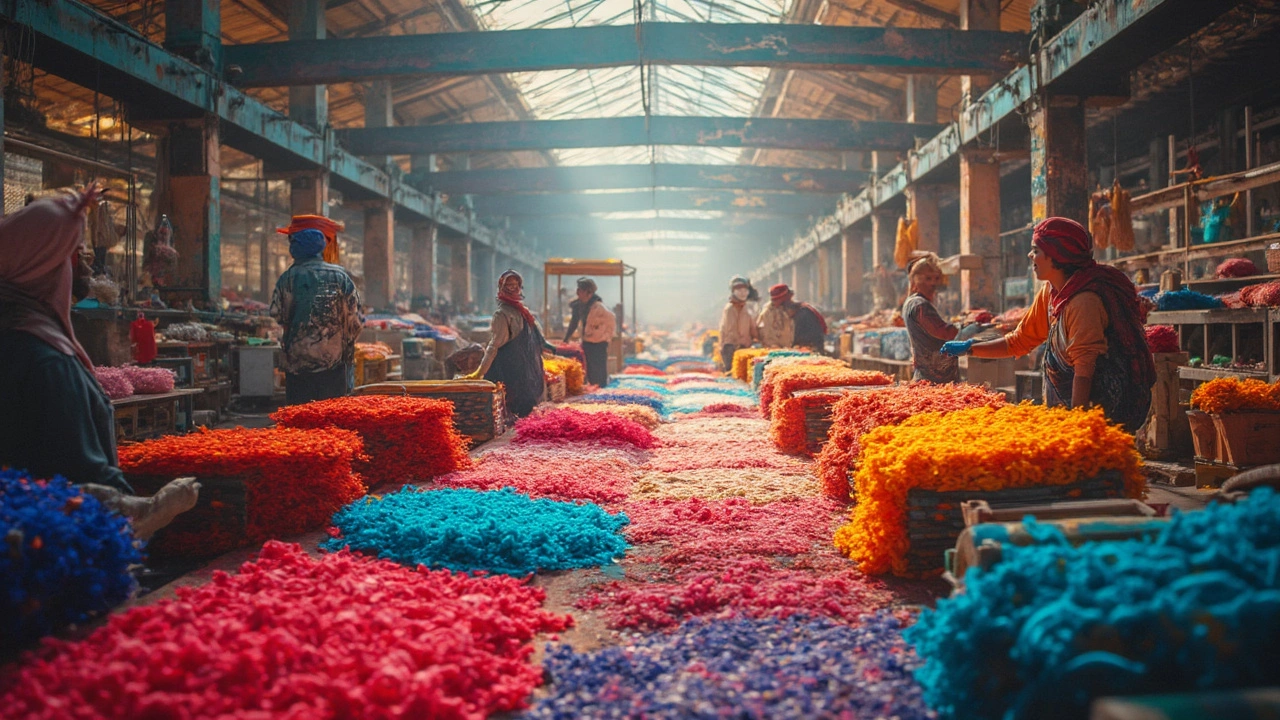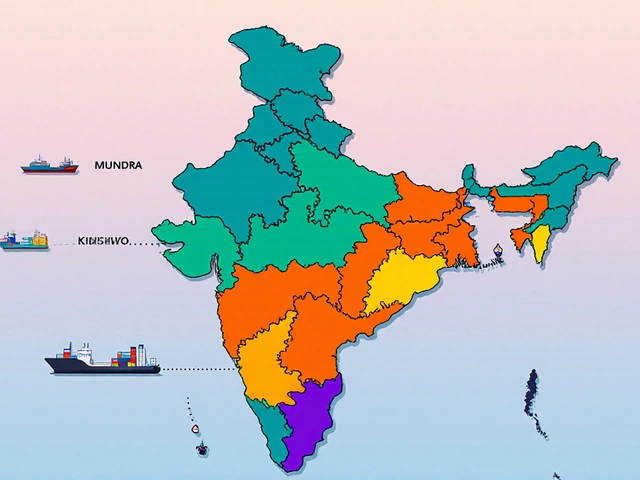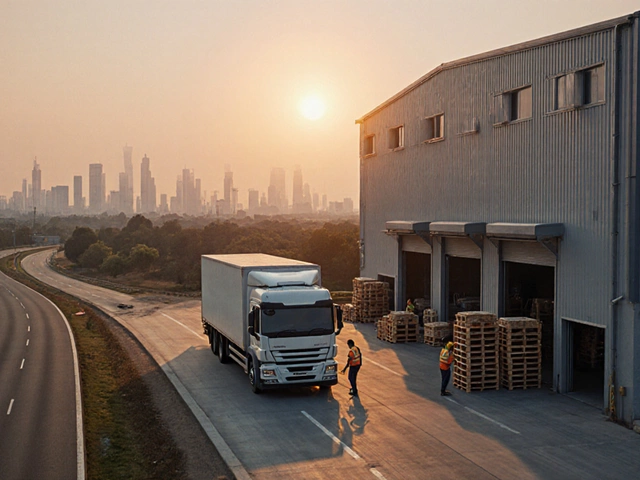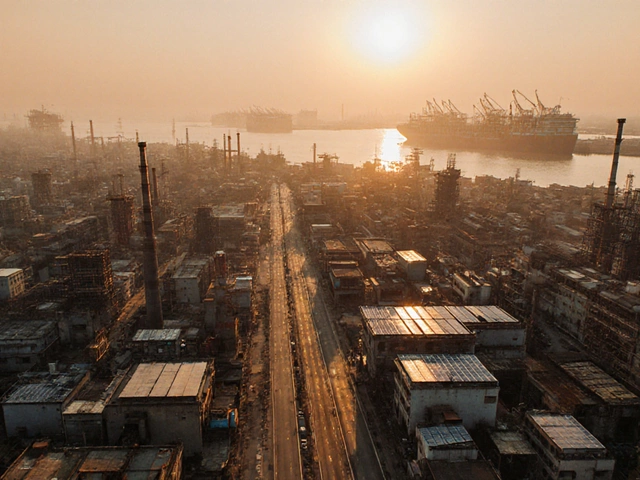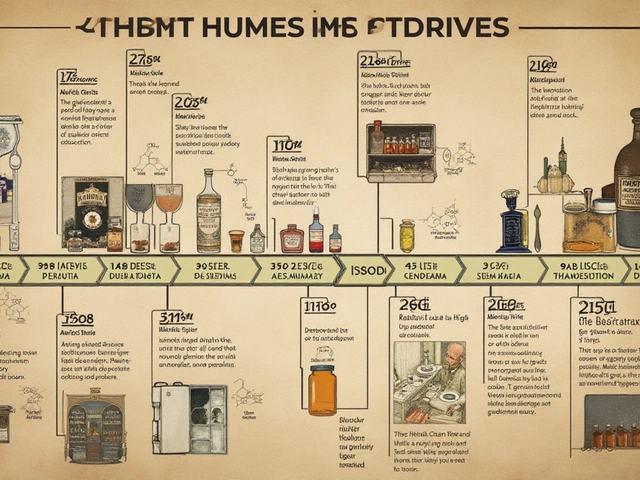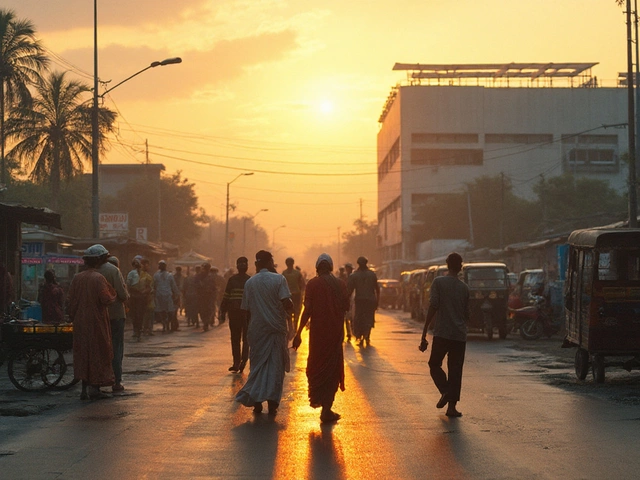So, who's the big fish when it comes to synthetic textile manufacturing in India? Welcome aboard as we navigate the world of threads and fibers. In case you didn’t guess, it’s Reliance Industries Limited. These folks aren’t just dabbling in textiles; they’ve built a textile empire!
Their synthetic textile sections churn out millions of meters of fabric, from the comfy polyester that we love wearing to those technical textiles used in industries. What sets them apart? It’s their knack for blending innovation with sheer scale. Not only do they lead in quantity, but their quality and tech-driven approaches are mind-blowing.
We'll take a deeper dive into how Reliance transforms basic materials into the finished products we see in stores, their impact on our economy, and some nifty tips on how to spot top-notch quality in synthetic fabric next time you're shopping. Keep reading; you might just become a textile aficionado by the end!
- The Giant in Synthetic Textiles
- Innovative Approaches in Manufacturing
- Impact on India's Economy
- Tips on Identifying Quality Textiles
The Giant in Synthetic Textiles
When it comes to the synthetic textile manufacturer India scene, Reliance Industries Limited is the name that towers above the rest. Picture them as the titans in the industry who have their hands in just about everything—from oil to fashion, they’ve got it covered. But here, we’ll keep the spotlight on their textile domain.
Reliance started its textile journey way back in the 1960s, and today, it’s a powerhouse in the sector, contributing heavily to the textile industry India. Their operations cover a broad spectrum, but it’s the synthetic textiles, particularly polyester, that roll off their production lines in mind-boggling quantities. They produce over 2 million tons of polyester fiber annually. That’s enough to wrap around the Earth several times!
What makes Reliance a standout? It’s their commitment to staying ahead with technology. They're not just pumping out fibers; they're innovating with products like eco-friendly fibers and high-performance sportswear fabrics. These innovations have positioned them not just as a supplier but as a leader influencing global trends in synthetic textiles.
Speaking of influence, Reliance employs tens of thousands in India, providing livelihoods and fostering regional development. Their economic footprint is massive, and their products are essential to everyday life—from clothing to home décor.
Today, Reliance’s reach extends beyond Indian shores, exporting its products worldwide. This international presence further cements its role as a leader in synthetic textiles, showcasing Indian manufacturing prowess on a global stage. Whether you're donning a casual T-shirt or examining industrial fabrics in gadgets and vehicles, there’s a good chance that Reliance had a hand in its creation.
This solid foundation of innovation, reliability, and sheer scale makes Reliance Industries an unshakeable pillar in India’s textile industry, ensuring it remains a driving force in the largest textile manufacturer league.
Innovative Approaches in Manufacturing
What makes Reliance Industries Limited a standout in the world of synthetic textile manufacturing? It's their relentless push for innovation. They have transformed the textile landscape, not just with size but with brains, leveraging cutting-edge technology and sustainable practices.
Their use of automation is mind-boggling. Imagine a factory floor where robotic arms are as common as sewing machines. These robots handle the repetitive and heavy-lifting tasks, ensuring precision and reducing human error. Pretty neat, right?
But it’s not just about machines. They're big on sustainability too. Reliance has invested heavily in eco-friendly processes. They’re cutting down on water usage, amping up recycling efforts, and even using renewable energy sources. Their goal? To lower their carbon footprint while setting industry standards in textile production.
Let's talk about their R&D labs. These places are bustling with creativity, constantly creating new fibers that boast improved durability and comfort. Their tech wizards are dabbling in everything, from weather-resistant fabrics to textile composites used in construction and beyond.
Reliance Industries isn't just resting on its laurels, though. They’re pretty transparent about their production processes, maintaining certifications like OEKO-TEX, which guarantees the absence of harmful chemicals in their textiles.
In case you're curious about numbers:
| Innovation Area | Impact |
|---|---|
| Automation | 20% decrease in production time |
| Sustainability Initiatives | 35% reduction in water usage |
| R&D Innovations | Launch of 10 new sustainable fabrics in 2024 |
Now that's what we call smart manufacturing! Whether you're an aspiring designer or just someone who craves comfy clothes, understanding these innovations helps you appreciate the journey of your favorite textiles.

Impact on India's Economy
Talk about a big player in the economic game, Reliance Industries Limited doesn’t just keep its textile endeavors within factory walls. Their synthetic textile manufacturing significantly powers India's economy, providing a strong backbone to both the industry and the country’s GDP.
Kicking off with job creation, Reliance's massive operations require a workforce of thousands across production, logistics, and administration. This not only offers employment opportunities but also boosts household incomes in the regions where these facilities are located.
Then there’s the export angle. Since India is a hub for synthetic textiles, Reliance plays a key role in feeding this demand globally. Their products reach countries in Europe, North America, and beyond. Exporting such volumes brings foreign currency into the country, stabilizing our currency and helping balance trade deficits.
The ripple effects don’t stop there. Consider the consortium of businesses directly linked to Reliance—right from raw material suppliers to small-scale industries crafting final products like garments and furnishings. This network amplifies their economic contribution several-fold.
Finally, Reliance is pioneering eco-friendly synthetic textile solutions which align with global sustainability goals. Such initiatives can make Indian textiles more attractive to eco-conscious brands worldwide, thus opening new avenues in international markets.
| Impact Area | Contribution |
|---|---|
| Employment | Thousands of jobs |
| Global Exports | Major contributor to foreign revenue |
| Industry Growth | Drives related sectors like logistics and materials |
Reliance's role in India's textile industry is a testament to how one industry giant can significantly shape the nation's economic landscape. From local employment to global trade, their footprint is massive.
Tips on Identifying Quality Textiles
Trying to pick out quality textiles can feel a bit like finding a needle in a haystack. Don't worry, though; there are a few things you can watch out for to make sure you get the best bang for your buck, especially when dealing with synthetic textiles.
First, let’s talk about the feel. When you’re handling the fabric, it should feel consistent and smooth, not rough or easily wrinkled. High-quality textiles, even synthetic ones, tend to have a better hand feel. Give it a stretch test; it should return to its original shape without losing its structure, which is a sign of good elasticity.
- Color Consistency: Check if the color is uniform across the fabric. If it looks splotchy under light, that's a red flag.
- Breathability: Quality synthetic materials should allow some breathability. Hold it up to light; if you can see a little daylight, that’s usually good.
- Durability: Rub two sides of the fabric together. Higher friction resistance means it’ll last longer without wearing.
- Cost: Bargain bins are tempting, but if it seems too cheap for what it is, the fabric might not be durable.
Here's a quick look at the durability and expected lifespan of common synthetic textiles:
| Fabric Type | Durability | Expected Lifespan |
|---|---|---|
| Polyester | High | 5-10 years |
| Nylon | Very High | 10-20 years |
| Rayon | Moderate | 2-3 years |
Always check for little details like how the seams are stitched. Even in largest textile manufacturer productions, attention to detail is a good quality indicator. Finally, don’t shy away from asking questions about the fabric’s manufacturer if you're shopping somewhere that provides that info. Anyone legit will be happy to flaunt their quality sources.
